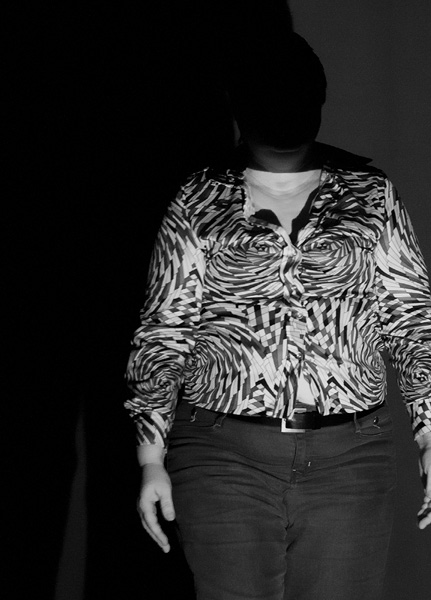
OUETTE
first performed on October 10, 2012
Wassard Elea in Acea, Italy
performed three times in 2012
KAREN BERNARD
Owen Chapman
New York, NY
738164604k738164604b738164604@738164604n738164604e738164604w738164604d738164604a738164604n738164604c738164604e738164604a738164604l738164604l738164604i738164604a738164604n738164604c738164604e738164604.738164604o738164604r738164604g
newdancealliance.org
OUETTE
KAREN BERNARD
“Ouette” continues my redefinition of choreography for solo dance. I enlarge the concept of solo to include my creation of stage sets via a laptop computer and projector that I manipulate during performances to create a multimedia environment. Moving and altering the computer is an integral component of “Ouette” and adds a very present, behind-the-scenes reality to the fluid movement between fantasy and reality. The laptop is both a physical partner and virtual vehicle through which I attempt to control my world. Through projections, the work expands from a solo to a duet (with the computer) to a group work (through video). I travel beyond the space in which I generate emotional, if not a physical freedom. Traveling—whether actual or metaphorical—becomes synonymous for sexual liberation and empowerment.
“Ouette” was roughly inspired by the 2003 film The Swimming Pool by Francoise Ozon. The film ignited controversy with its ambiguous nature and unclear conclusion. The video merges snippets from the film, iconic images, mysterious light and shadows and patterns. For example, reoccurring imagery such as my paisley vintage shirt hints toward my own biography. The projected images create a counterpoint, an objectified partner, if you will, to my solo dancing. The choreography suggests a narrative, and yet is elusive and slippery as to resolution or even meaning. Our relationship to mortality, reflected from a point closer to the end of life than the beginning, is deepened and expanded as the dance progresses.
The role of the audience is crucial in both dances. I challenge the audience to engage as active participants who must continually make choices throughout my performance. For example, I project images onto audience members, bathing them in light and highlighting their presence. I view my interaction with the audience as simultaneously intimate and voyeuristic; seeing my audience as active witness influences the content and execution of the performance and blends the public and private.
In addition to popular music, original music by Canadian composer Owen Chapman was used in the piece. His digital compositions are postmodern pastiches of vintage recordings, hints of movie scores, and big band recordings, overlaid with pop culture-driven sounds and often produced with innovative sound-making devices.